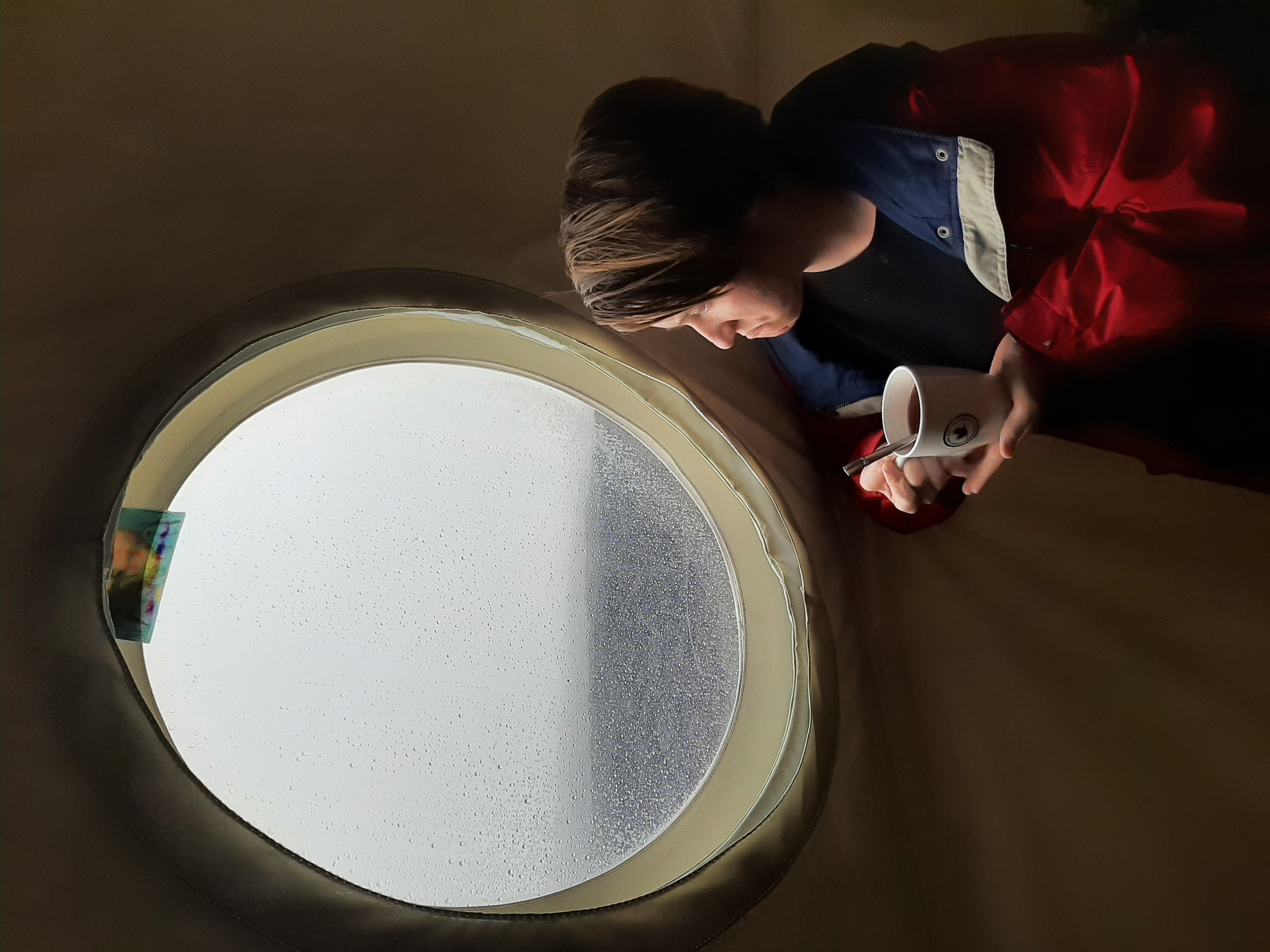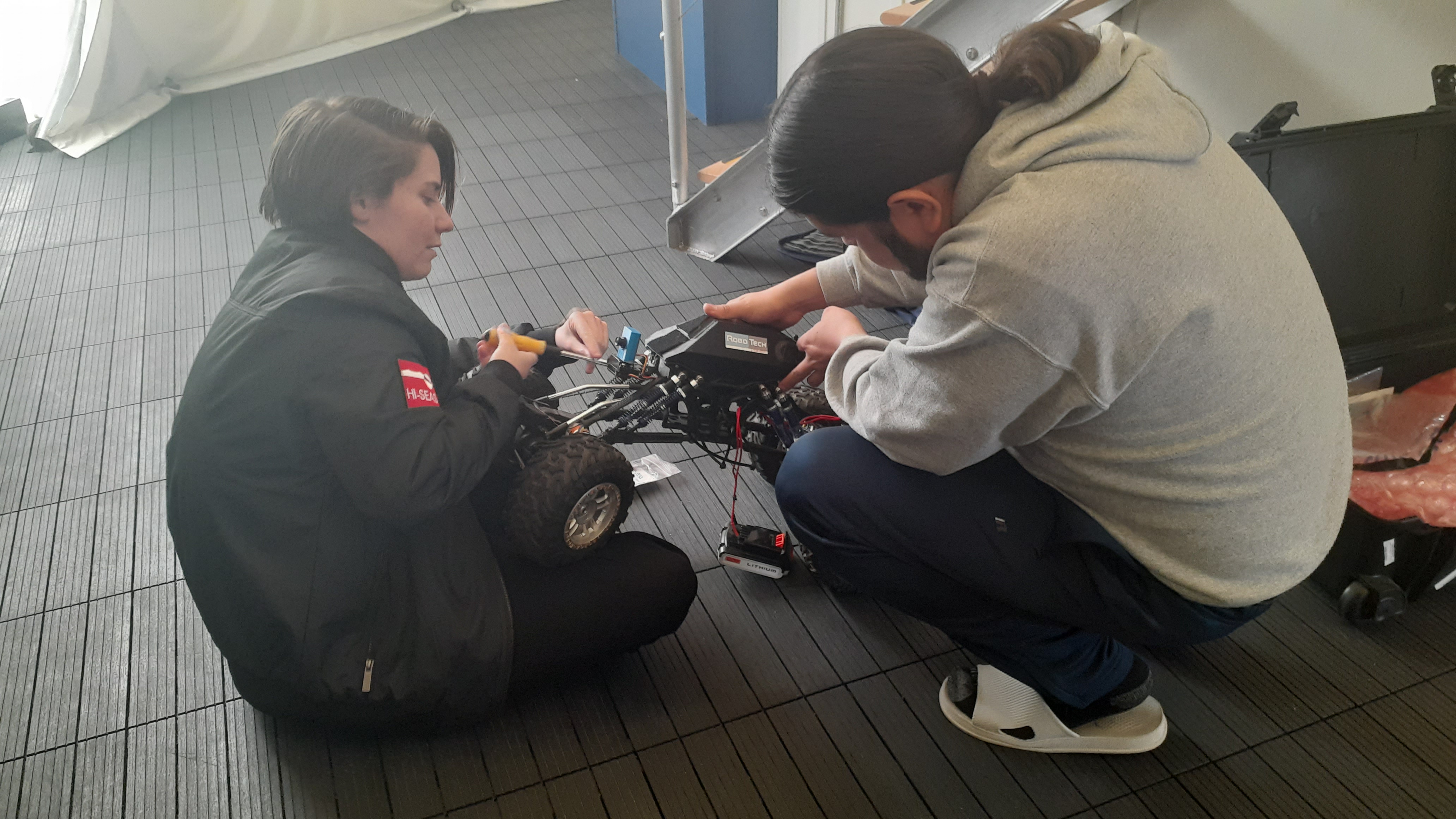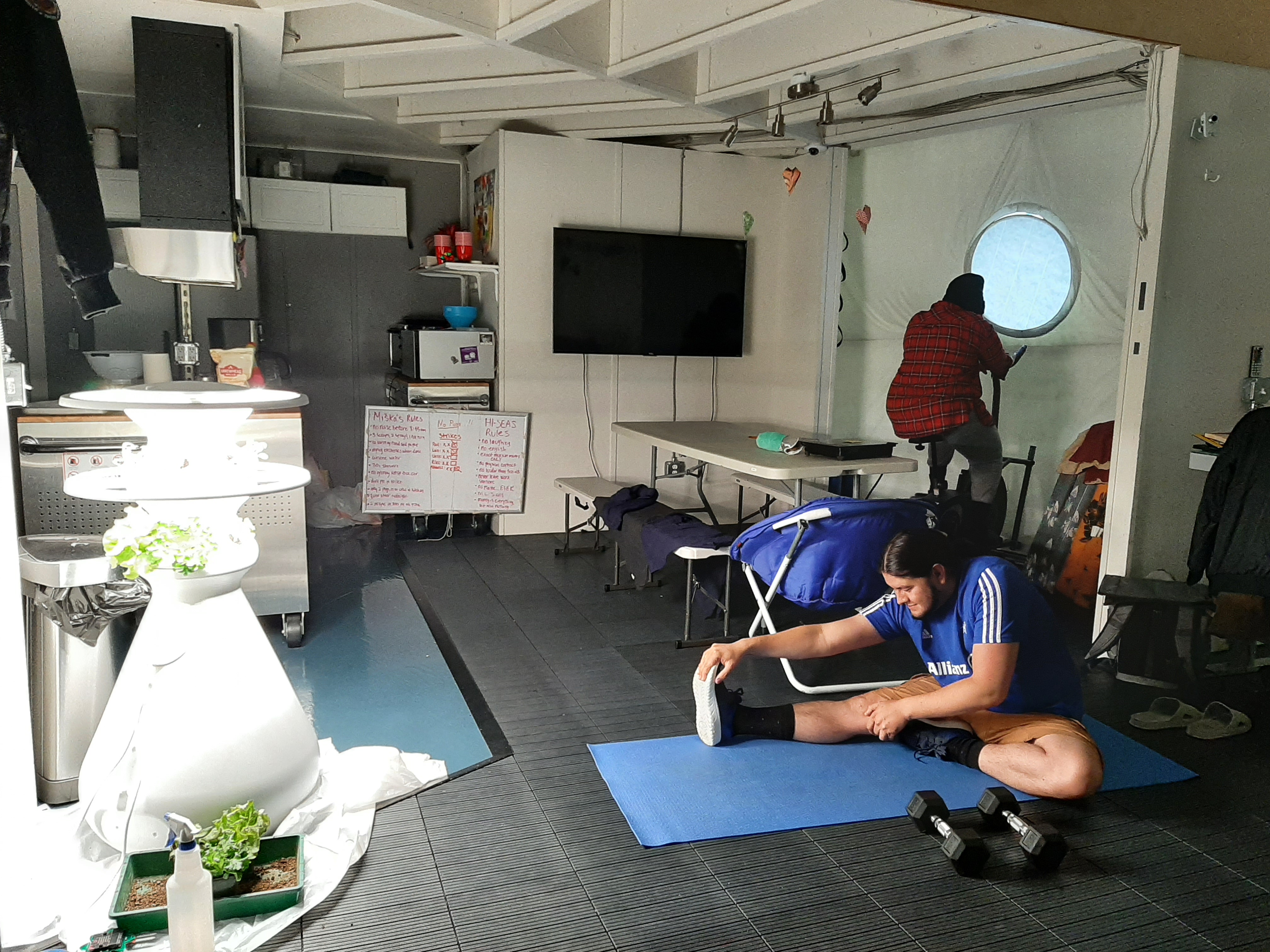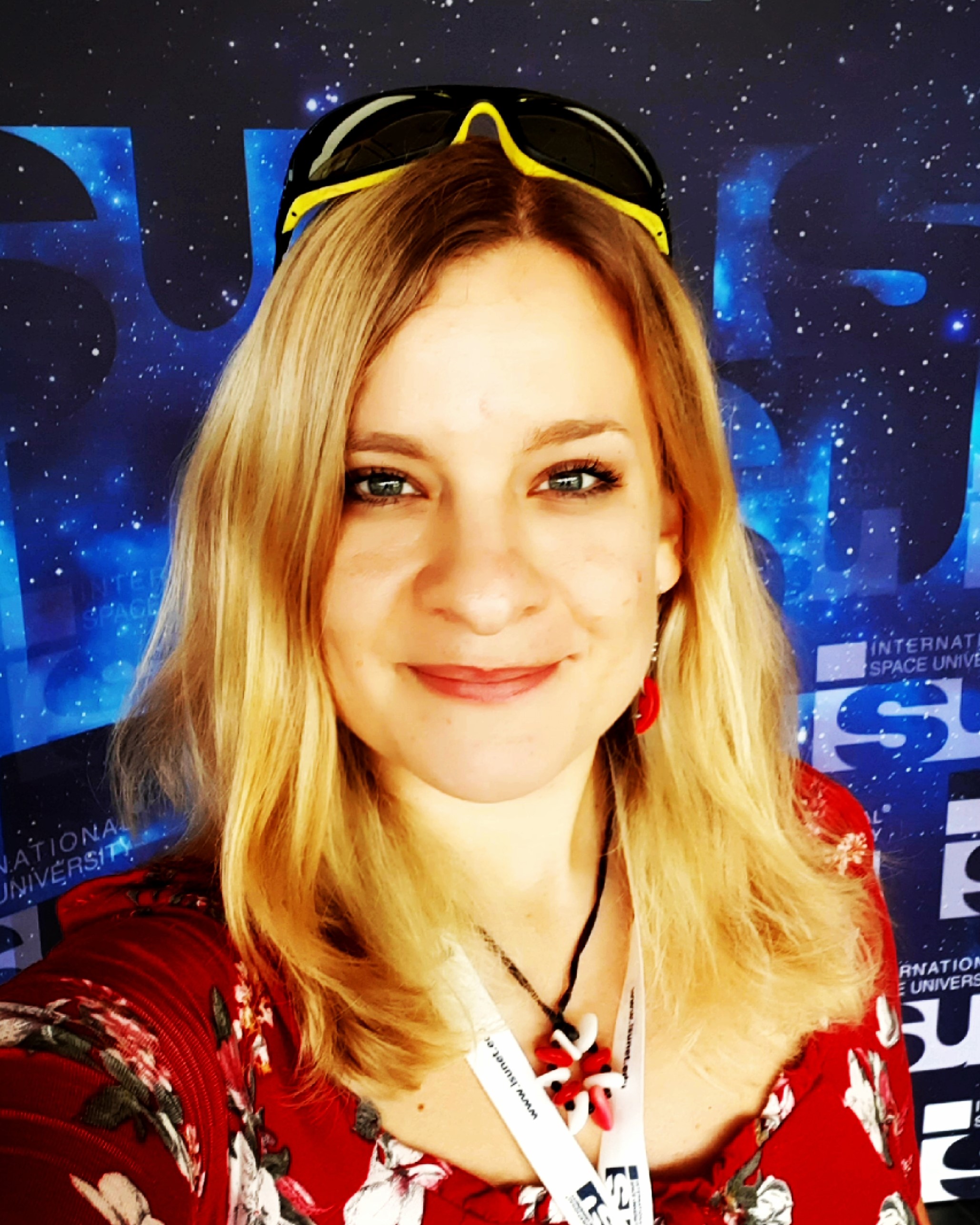Selene III commander's report: When all hope drains away from the crew on the 'moon' — Day 8

Confined to the inside of the HI-SEAS habitat, the Selene III crew is starting to succumb to despair and the "dark side" when they're repeatedly not able to go on a moonwalk.

Dr. Michaela Musilova is the director of Hawaii Space Exploration Analog and Simulation (HI-SEAS) program, which conducts analog missions to the moon and Mars for scientific research at a habitat on the volcano Mauna Loa. Currently, she is in command of the two-week Selene III lunar mission and contributed this report to Space.com's Expert Voices: Op-Ed & Insights.
Commander's report for the Selene III moon mission at HI-SEAS
Lunar day 8 (March 1, 2021)
Grey and more grey. That is all that we could see outside the window — endless grey "dust clouds" on the moon (aka mist and storm clouds on the volcano Mauna Loa in Hawaii where the HI-SEAS analog space habitat is located). Today was the eighth day of complete confinement for the Selene III crew inside the habitat. The crew can't go on moonwalks outside of the habitat unless the atmospheric conditions are safe for them. Any kind of storm poses a major safety hazard for the crewmembers on both the simulated moon and the actual volcanic terrain HI-SEAS is located in.
Day after day, more hope started to drain away from each crewmember. At first, they would look out the main habitat window every few minutes hoping for a different view. Slowly, it became looking out the window every few hours. When someone remarked that they could see some new topographic features appearing within the grey dust, the whole crew would rush to the window filled with hope. Now, some crewmembers would prefer that the window be covered up so the greyness outside would not depress us further.
Related: Selene III: Starting off an analog lunar mission with exploding bombs — Commander's report: sol 3

Not being able to go outside to perform research experiments and explore the lunar surface is only part of the problem. On bad weather days, we can't recharge our habitat's batteries properly, as they are solar-powered. During dust storms, very little solar energy reaches the solar panels outside of the habitat. This means that we have to live in so-called low power mode to get through each day. One of the first things that we do is unplug all devices that aren't vital to our survival and we turn the heating down dramatically (to around 55 degrees Fahrenheit, or 13 degrees Celsius).
Breaking space news, the latest updates on rocket launches, skywatching events and more!
Cold and disheartened, the Selene III crew had their first very low spirit day today. They have been trying hard to find the silver lining in our situation and to cheer themselves up with various fun activities. However, yet another grey day seems to have done the trick. Even crewmembers from the Valoria 1 crew reached out to us with words of encouragement and privately exclaimed to me, "not again!" They themselves suffered through a series of very low power days and endless moonwalk rescheduling.
Related: The Valoria 1 crew is fighting to survive the night — Commander's report: sol 8

Another negative aspect of this situation is that the crew started to distrust our Mission Support team and CAPCOM (capsule communicator, who is the main person communicating with the crew from the Mission Control Center on Earth). We have a big team of volunteers that perform Mission Support and CAPCOM duties during each mission at HI-SEAS. One of their many roles is to provide weather reports and forecasts to the crew on a daily basis or even more frequently upon request.
Their predictions have not been very accurate for the past week, so my crewmembers have become very skeptical of any information provided to them in relation to the weather. This kind of crew-ground disconnect is a mutiny of sorts, which is not uncommon on both analog and real space missions. It can develop for a number of reasons, for instance, when the staff on Earth has too many demands for the crew in space or in this case, when Mission Support provides the crew with inaccurate information. I have thus been needing to remind the crew that this discrepancy in information is caused by incomplete data from our location on the moon and not from the ill-will of our Mission Support team.
It was time for a change before my crew would become more grumpy and depressed. We all have to exercise for at least 30 minutes every day, so I suggested that we have a dance party as our exercise session for today. In this way, we fulfilled our exercise quota for the day and cheered ourselves up. I had every crewmember choose their favorite song for us to dance to and I started us off with some '90s techno music. Next thing I knew, there were smiles on my team's faces again and we all felt much warmer too.

Filled with more positive energy, we decided to continue with fun and creative activities to keep our spirits high. Most crewmembers are big fans of the Star Wars movies, so we decided to introduce them to the others that had not seem them yet. Soon enough, crewmembers would exchange inside jokes about "Dark Vader" and "lovely" Skywalker family traditions of cutting off each other's hands with lightsabers. We even posed for a fun crew picture together with simulated lightsabers. Considering my past jokes about favoring the dark side, based on my experiences with the Valoria 2 crew, I chose a red lightsaber.
These challenging times on the Selene III mission have been a great source of inspiration for Science Communication Officer Brooke Edwards' outreach project. Brooke has been recording her experience as an analog astronaut to analyze what she thinks will be important factors for the mental wellbeing of future space travelers. Her experience has shown that good relationships within the crew and having a positive mindset are vital to the success of a simulated space mission.
Similarly, our Operations Officer Eboni Brown has been able to collect very interesting data for her chronic stress and human connectivity study through anonymous survey questions. Results of her research will help determine what impact chronic stress, such as the global pandemic, had on the Selene III crew and their ability to connect with each other.
However, the rest of the crew faced further negative news on mission due to their projects not going as well as they hoped. Crew Bioengineer Zoe Maxwell's perchlorate and nitrate reduction using bacteria and aquaponics started out well and showed signs of initial success. However, one of the fish in the aquaponics part of the experiment died and the plants, which she was trying to grow, never adapted to the challenging environment in the habitat and ended up wilting.

Crew Engineer Oscar Ojeda's project, focused on the characterization of the communications and hazards during an analog space mission, has been progressing steadily. Nonetheless, he has not been able to evaluate anything related to doing moonwalks, since the crew has been limited to the inside of the habitat because of the dust storms. Instead, he focused on new projects, such as operating and testing the Slovak RoboTech Vision company's Androver we have at HI-SEAS.
At least part of Bioscience Officer Jason Fischer's project is going well. He is trying to determine the efficacy of simulated wastewater permeate as a nutrient source for growing microgreens. Jason is comparing it to an industry standard hydroponic nutrient solution. So far, the wastewater permeate is not conducive to growing microgreens and it will need to be treated with a nutrient modification to succeed in this endeavor.
Commander Musilova signing off hoping the force will be with us and that we'll see more than just grey outside the window tomorrow.
Follow Michaela Musilova on Twitter @astro_Michaela. Follow us on Twitter @Spacedotcom and on Facebook.

Dr. Michaela Musilova is an astrobiologist with a focus on life in extreme environments. She has a PhD degree from the University of Bristol and is a graduate from the International Space University's (ISU) Space Studies Program. Michaela's space research experience includes working at the NASA Jet Propulsion Laboratory, University of London Observatory, Canada-France-Hawaii Telescope, on NASA's and the U.K. Space Agency's MoonLite project, being an analogue astronaut and Commander of numerous simulated missions to the moon and Mars at the HI-SEAS station in Hawaii, and at the Mars Desert Research Station in Utah. Michaela is currently the Director of HI-SEAS, as part of the International MoonBase Alliance. She is also a visiting Professor at the Slovak University of Technology, Vice-Chair of the Slovak Organisation for Space Activities, Adjunct Faculty at ISU and the Senior Research Adviser for Mission Control Space Services Inc.
She has received numerous prizes and grants, including the Emerging Space Leaders Grant from the International Astronautical Federation (2016) and the Women in Aerospace – Europe Young Professional Award (2016), and she was selected as one of the most promising 30 under 30 by Forbes Slovakia (2015). Michaela is also actively involved in the Duke of Edinburgh's International Award, as a patron of the program in Slovakia and an Emerging Leader Representative for Europe, Mediterranean and Arab states. Furthermore, she enjoys participating in STEAM outreach activities from teaching at schools, giving public presentations, to working with the media and more, as well as encouraging people to pursue their dreams. For instance, she is an Advisory Board Member of the STEM Punks immersive programs for students and teachers.
